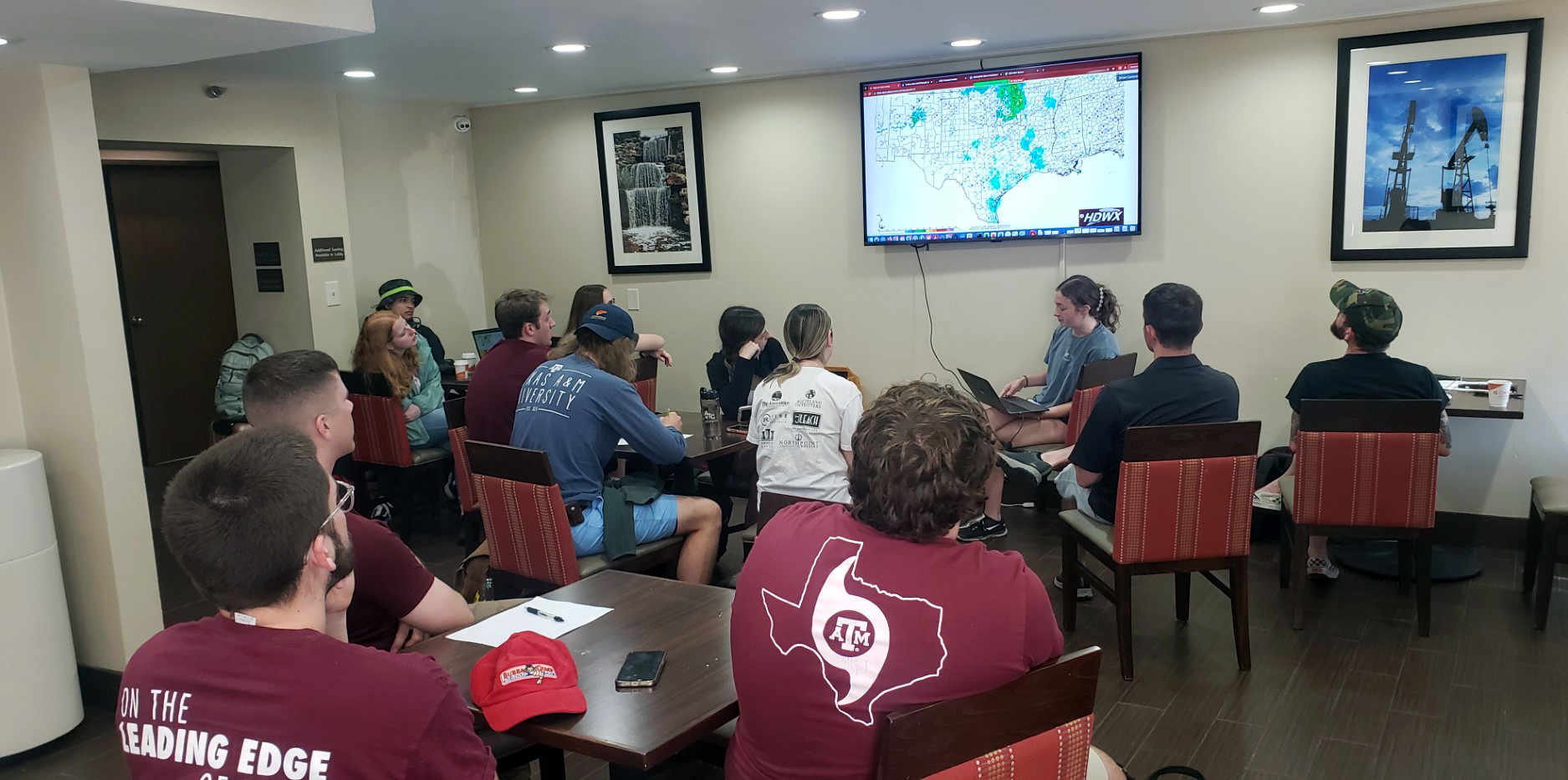
In the world of meteorology, atmospheric phenomena have fascinated scientists and storm enthusiasts alike for centuries. It is within this realm of exploration that a group of 12 Texas A&M University undergraduate students in the Department of Atmospheric Sciences embarked on a journey as part of the Spring 2023 section of ATMO 370 - Student High Impact Experiences in Meteorology: Convective Storms Field Studies (CSFS).
Led by atmospheric scientists Dr. Christopher Nowotarski and Dr. Erik Nielsen, the popular class aims to equip students with practical knowledge and hands-on experience in studying convective storms, particularly tornadoes. Enrollment typically features a mix of sophomores, juniors and seniors who are selected through an application process after completing required prerequisite courses offered through the department.
During the semester, the participating students engaged in monthly meetings that served as a platform for deep diving into the geography and climatology of tornadoes across various states in the U.S. Great Plains. They explored advanced forecasting techniques for severe storms and learned how field data collection has significantly contributed to the understanding of severe thunderstorms and tornadoes.

The course culminated in a rather unique field trip: During a two-week window from May 11-25, students took turns providing severe-weather forecasts to the group. If conditions aligned and thunderstorms or tornadoes were expected, the team would set out to observe the meteorological phenomena.
By May 25, the class had resulted in three trips of 2-3 days each, mostly in southwestern Oklahoma and the Texas Panhandle. In addition to forecasting and navigating to observe storms, the group also conducted a series of weather balloon launches, deploying radiosondes to collect crucial atmospheric data in the pre-storm environments. This real-time data then was shared with local national weather service forecast offices and the storm prediction center, providing valuable insights for severe weather forecasting and decision-making processes, particularly regarding watches and warnings.
While the group did not encounter any tornadoes on the field trips, students observed more than a dozen supercell thunderstorms, often referred to as the “parents of tornadoes.” The supercell thunderstorms provided the students with an up-close encounter of some of nature's most dramatic displays.

In addition to the primary focus on convective storms, the field trips also featured a secondary component led by Dr. Chris Maupin, a research associate in the Department of Geography. The students were tasked with analyzing how water isotope ratios change from the water vapor feeding storms to those within hailstones produced by the storms. Collaborating with Maupin, the students collected water vapor and hailstone samples, which will serve as valuable data for future studies examining isotopic "fingerprints" of storm and precipitation patterns in past climates.
"This class allows students to put their weather forecasting skills and knowledge of thunderstorms learned in the classroom into practical use in the field,” Nowotarski said. “Visual observation of storms is a key to understanding how conceptual processes from textbooks play out in reality and lead to a richer understanding of how severe thunderstorms develop, evolve and impact society."
